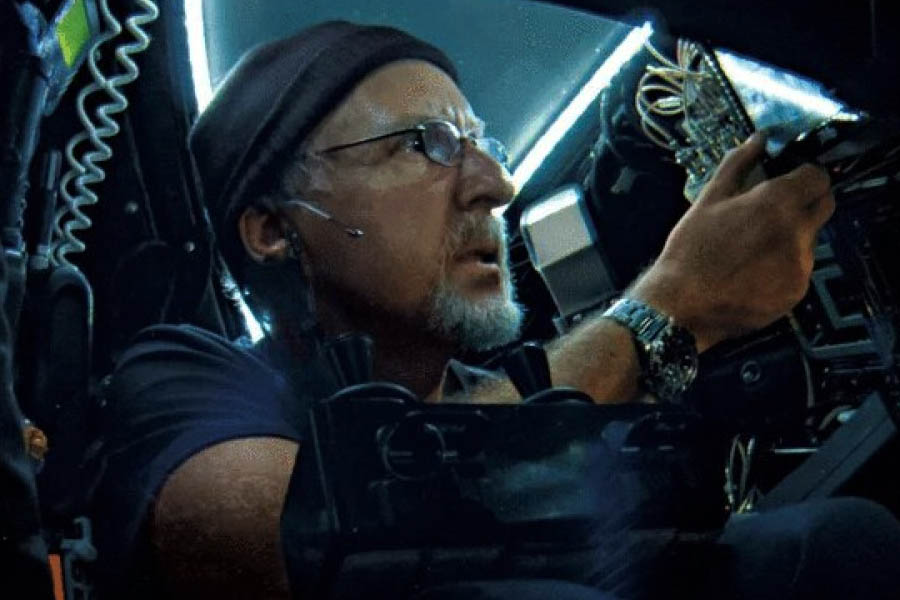
Director James Cameron, renowned for his blockbuster film 'Titanic,' made headlines in 2012 when he embarked on a remarkable solo journey to the bottom of the Mariana Trench, the deepest part of the world's oceans. After meticulous preparation spanning nearly five years, Cameron successfully completed the expedition on March 26, 2012, aboard the Challenger Deep, a 24-foot-long, 12-ton submarine. This unprecedented feat showcased Cameron's passion for deep-sea exploration and added another remarkable achievement to his long list of underwater expeditions.
Exploring the Titanic Wreckage:
James Cameron's fascination with the sea had led him to explore the depths numerous times in his life, with 70 deep-sea dives and 33 visits to the Titanic wreckage. The tragic sinking of the Titanic, which claimed the lives of 1,500 people on April 14, 1912, resurfaced in the news recently after five individuals lost their lives in an explosion while attempting to view the submerged wreckage. Coincidentally, Cameron, who produced the renowned film 'Titanic' based on the same disaster, became the first person to venture alone to the bottom of the Mariana Trench.
The Discovery and Filmmaking:
In 1985, a team led by Dr. Robert Ballard discovered the wreckage of the Titanic, while James Cameron himself visited the site on September 11, 1986. The subsequent release of Cameron's 1997 film, which depicted the Titanic tragedy, became a global phenomenon, captivating audiences worldwide. However, Cameron's fascination with deep-sea exploration didn't end there.
The Mariana Trench Expedition:
Located in the Western Pacific Ocean approximately 2,600 kilometers east of the Mariana Islands, the Mariana Trench is the deepest part of the Earth. It plunges to a staggering depth of 10,984 meters (36,037 feet) below sea level. Despite the extreme conditions, Cameron managed to descend to 10,908 meters (35,787 feet), spending two hours and thirty-six minutes at the ocean's floor. During his three-hour stay, he captured breathtaking images, gathered samples, and made surprising discoveries.
Unveiling Life in the Deep:
Cameron's expedition revealed that life exists even in the Mariana Trench, where water pressure is a staggering 1,071 times higher than sea level. Equipped with state-of-the-art cameras, including 3D capabilities, and a 72-hour life support system, the battery-powered Challenger Deep submarine documented the fascinating biodiversity thriving in this extreme environment. Cameron encountered and photographed a variety of species, such as tubeworm bacteria, amphipods, sea cucumbers, gulper eels, and heddle snails. Scientists were astonished by the presence of life in this inhospitable region, challenging the previous belief that such depths could not sustain life.
The Cost and Significance:
The expedition to the Mariana Trench, estimated to have cost around $10 million, represents a significant milestone in the field of deep-sea exploration. Cameron's personal account of the journey, documented in a subsequent film, shed light on the awe-inspiring beauty and scientific importance of this uncharted territory. Despite encountering minor issues during the dive, Cameron's expertise and quick thinking ensured a successful expedition.
Reflections and Concerns:
Recalling his dive, Cameron expressed profound wonderment, likening the experience to being on another planet or watching a science-fiction movie. His profound appreciation for the ocean's beauty was further deepened during this momentous voyage. Additionally, the expedition shed light on the delicate ecosystem and decaying state of the Titanic wreckage. Cameron joined the chorus of researchers demanding preservation and criticized the commercial exploitation of the area following the tragic Oceangate incident.
James Cameron, celebrated Hollywood director and adventurer, once again pushed the boundaries of exploration by becoming the first person to embark on a solo dive to the depths of the Mariana Trench. His audacious expedition showcased the wonders of the ocean's depths, unveiled the existence of life in the harshest conditions, and brought attention to the preservation of historical relics. Cameron's indomitable spirit and passion for discovery continue to inspire both scientists and enthusiasts alike to delve into the mysteries of the deep sea.